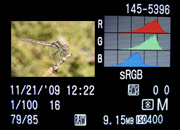 Today, NASA released an incredible “blue marble” image of the Earth. It was created by combining a bunch of smaller photos to create one massive 64-megapixel image (8,000×8,000 pixels).
Today, NASA released an incredible “blue marble” image of the Earth. It was created by combining a bunch of smaller photos to create one massive 64-megapixel image (8,000×8,000 pixels).
You can check out the full resolution image by clicking here.
PhotoNaturalist - nature photography tips and tutorials
nature photography tips and tutorials
 Today, NASA released an incredible “blue marble” image of the Earth. It was created by combining a bunch of smaller photos to create one massive 64-megapixel image (8,000×8,000 pixels).
Today, NASA released an incredible “blue marble” image of the Earth. It was created by combining a bunch of smaller photos to create one massive 64-megapixel image (8,000×8,000 pixels).
You can check out the full resolution image by clicking here.

Well, as you probably already know, “automatic” doesn’t always work (especially when it comes to cameras). But, that’s what makes photography so fun 🙂
One of those automatic features of your camera that doesn’t always work is white balance.
[Read more…] about Why You Shouldn’t Rely on Auto White Balance
 A few weeks ago, I explained how to use the histogram to get a better exposure. And although the default histogram will give you a general idea of an image’s exposure, there’s actually a special histogram that’ll tell you a lot more: the RGB histogram.
A few weeks ago, I explained how to use the histogram to get a better exposure. And although the default histogram will give you a general idea of an image’s exposure, there’s actually a special histogram that’ll tell you a lot more: the RGB histogram.
Here’s how it works:
If you understand the regular histogram, then the RGB histogram is simple: it shows you the histogram of each individual color channel (red, green, and blue).
The bad thing about the regular histogram is that it lumps all these color channels together, making it hard for you to see if you’re underexposing or overexposing a specific color channel. And, on some cameras, I’ve heard that the regular histogram only shows you the green channel. [Read more…] about How to use the “special” RGB Histogram